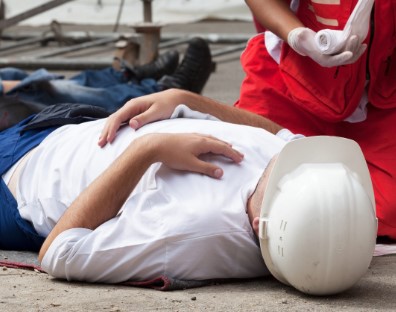Seafarers’ Knee Injuries
Knee injuries are a significant concern for seafarers due to the unique challenges and demands of their work environment. These injuries can have severe consequences, potentially impacting a maritime worker’s career and quality of life.
Common Knee Injuries in Seafarers
Seafarers are susceptible to various knee injuries, including:
- Fractures or dislocations of knee bones
- Torn ligaments (ACL, LCL, PCL, MCL)
- Strained, sprained, or ruptured tendons
- Torn cartilage
- Meniscus injuries
- Inflammation or infection of the bursa (bursitis)
- Tendinitis
- Contusions[1][2]
Causes of Knee Injuries
Several factors contribute to the high incidence of knee injuries among seafarers:
- Slipping on wet decks
- Falling while boarding vessels
- Twisting motions during work tasks
- Lifting heavy loads
- Maintaining balance in rough seas
- Repetitive tasks and overuse
- Working in a vertical environment on moving ships[1][2][4]
Prevalence and Impact
Knee injuries are among the most common maritime injuries. A study of 299 seafarers found that 51% had a diagnosis of knee osteoarthritis, with 34% showing predominant medial compartment degenerative changes[4]. Another study revealed that knee and lower leg injuries occurred at a rate of 1.84 per 1000 seafarer-years among non-officers, who were 4.21 times more likely to experience these injuries compared to officers[5].
Long-term Consequences
Osteoarthritis of the knee, particularly genu varus (bow-leggedness), is a significant long-term consequence for seafarers. This condition may result from acute minor trauma to the medial compartment, compounded by a lifetime of working in the vertical environment of a moving ship[4]. Genu varus was present in 31% of seafarers studied[6].
Prevention and Mitigation
To reduce the incidence of knee injuries among seafarers, several measures can be implemented:
- Improved ship design, such as installing two-lift systems
- Implementation of sound working practices
- Adequate training and proper equipment provision
- Regular health check-ups and early intervention
By addressing these factors, the maritime industry can work towards reducing the risk of knee injuries and improving the overall musculoskeletal health of seafarers[4][7]
Useful tips for seafarers on musculoskeletal pain
Citations:
[1] https://naylorlaw.com/longshore-injury-hotline/common-longshore-and-seamen-injuries-and-illnesses/
[2] https://www.marinerlaw.com/types-of-maritime-injuries/knee-injury-maritime-lawyer
[3] https://www.kherkhergarcia.com/compensation-for-maritime-knee-injuries/
[4] https://academic.oup.com/occmed/article-abstract/46/2/137/1590684?redirectedFrom=PDF&login=false
[5] https://pmc.ncbi.nlm.nih.gov/articles/PMC7970292/
[6] https://pubmed.ncbi.nlm.nih.gov/8776250/
[7] https://www.homed.gr/en/maritime-health/seafarer-musculoskeletal-health/

